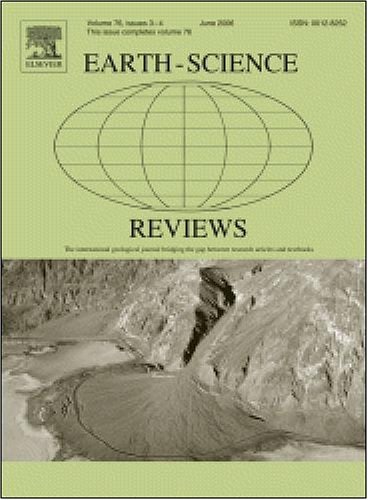迈向陆地生态系统的综合地质多样性-生物多样性联系
IF 10.8
1区 地球科学
Q1 GEOSCIENCES, MULTIDISCIPLINARY
引用次数: 0
摘要
与全球变化有关的挑战要求采取综合办法,在各种尺度上管理高度复杂的自然系统。生物多样性和地质多样性是自然多样性的重要组成部分,两者相互作用,在不同尺度上影响着气候条件的多样性。反过来,它们又受到人类社会文化多样性的影响和影响,特别是通过土地利用。自然提供的服务对人类来说是存在的,但长期以来一直被认为是理所当然的,没有经济价值。气候变化和生物多样性丧失对生态系统功能和服务造成严重后果。这同样适用于自然界的非生物元素,从含水层到山体滑坡,再到大气中的化学和物理变化。学科障碍和专业化存在有充分的理由,但与全球变化相关的新挑战,以及地球观测的巨大能力,开辟了新的科学途径。强大的计算和数据分析算法很重要,但好的科学需要健全的概念和理论基础,以及跨学科性。迫切需要将地质多样性和生物多样性联系起来的概念来指导这一努力。在这里,我们汇编和评估现有的方法,旨在提供一个全面的概念框架,包括自然系统的定量、定性和功能特征。在适当的尺度上定义和分类实体类型(如生物体、矿物)和描述差异特征(如异质性、变化)是该框架的核心。我们关注功能多样性(对物质、能量和信息(如基因、物种性能)的通量的贡献)。简而言之,我们致力于建立一个完整的“地理多样性-生物多样性联系”。本文章由计算机程序翻译,如有差异,请以英文原文为准。
Towards a comprehensive geodiversity - biodiversity nexus in terrestrial ecosystems
Challenges related to global change require an integrated approach to managing highly complex natural systems on various scales. Biodiversity and geodiversity are key aspects of nature's diversity, which both interact with each other and affect the diversity of climatic conditions on different scales. In turn, they are affected by and influence the cultural diversity of human societies, in particular through land use. The natural provision of services is existential for humanity, but has long been taken for granted, and not economically valued. The consequences of climate change and biodiversity loss are severe for ecosystem functioning and services. The same applies to abiotic elements of nature, ranging from aquifers through landslides to chemical and physical changes in the atmosphere. Disciplinary barriers and specialization exist for good reasons, but the emerging challenges related to global changes, and the immense capability of Earth Observation, open up new scientific avenues. Powerful computing and data-analysis algorithms are important, but good science needs a sound conceptual and theoretical basis, and interdisciplinarity. Concepts linking geodiversity and biodiversity are urgently needed to guide this endeavour. Here, we compile and assess existing approaches, aiming to provide a comprehensive conceptual framework, including quantitative, qualitative, and functional characteristics of natural systems. Defining and classifying types of entities (e.g., organisms, minerals) and characterising differences (e.g., heterogeneity, change) at appropriate scales are central to the framework. We focus on functional diversity (contribution to fluxes of matter, energy, and information (e.g., genes, species performance)). In short, we work towards a full “geodiversity–biodiversity nexus”.
求助全文
通过发布文献求助,成功后即可免费获取论文全文。
去求助
来源期刊

Earth-Science Reviews
地学-地球科学综合
CiteScore
21.70
自引率
5.80%
发文量
294
审稿时长
15.1 weeks
期刊介绍:
Covering a much wider field than the usual specialist journals, Earth Science Reviews publishes review articles dealing with all aspects of Earth Sciences, and is an important vehicle for allowing readers to see their particular interest related to the Earth Sciences as a whole.
 求助内容:
求助内容: 应助结果提醒方式:
应助结果提醒方式:


